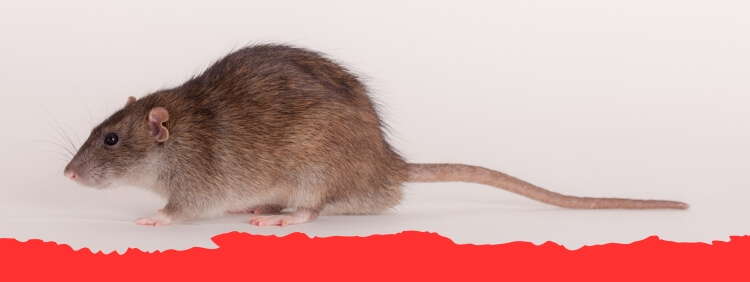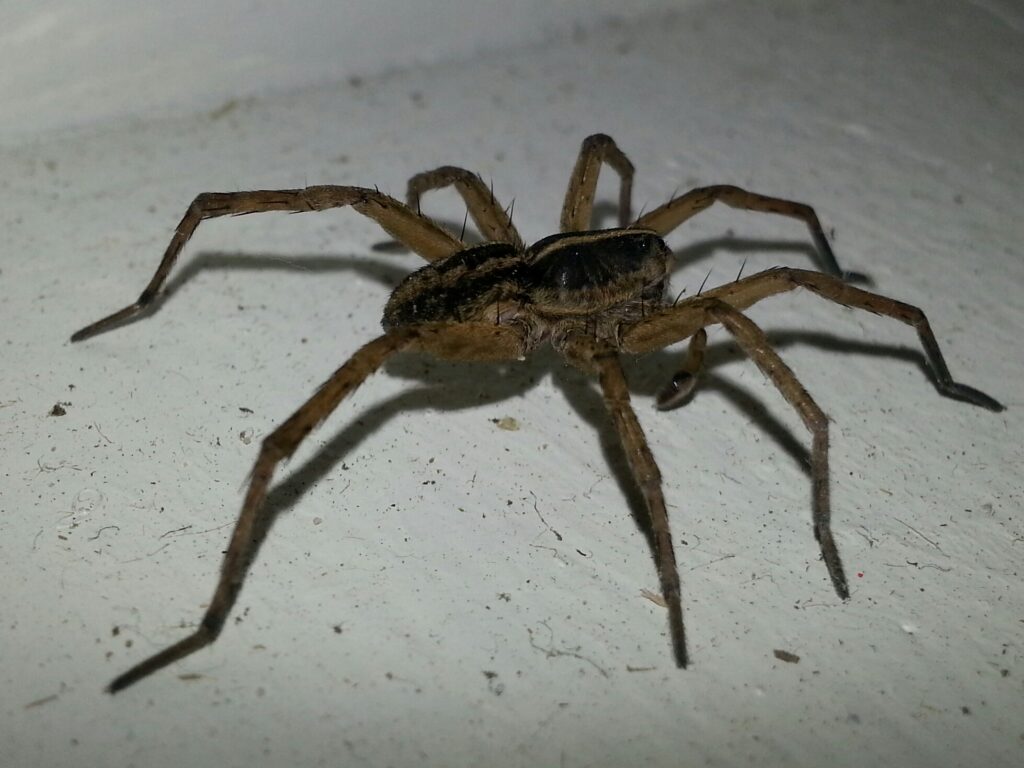 As a homeowner, you've likely experienced a variety of unwanted guests. However, none prove quite as troublesome as the rat, infamous for its long tail. Bristling with curiosity, many homeowners in Cambridge often find themselves asking, "Why exactly do these creatures have such lengthened tails?"
And when such a nuisance decides to take up residence in your home, what steps can you take to remedy the situation without causing further issues? Discover fascinating rat facts, signs of a nest establishing itself in your territory, and why it might not be the best idea to tackle this problem solo. Together, we'll explore effective strategies to trap these unnerving visitors.
Understanding these creatures not only satisfies our innate curiosity but is crucial for effectual pest management.
Moreover, learn why others in your community swear by the exceptional services of a particular pest management team. In this journey of discovery, you'll be amazed at the benefits of trusting professionals with such tasks.
Our guide will culminate with a comprehensive look at how to catch a rat with our pest control services, promising not only to get the job done but also to provide lasting solutions for rodent issues. So, let's embark on this educational journey together.
As a homeowner, you've likely experienced a variety of unwanted guests. However, none prove quite as troublesome as the rat, infamous for its long tail. Bristling with curiosity, many homeowners in Cambridge often find themselves asking, "Why exactly do these creatures have such lengthened tails?"
And when such a nuisance decides to take up residence in your home, what steps can you take to remedy the situation without causing further issues? Discover fascinating rat facts, signs of a nest establishing itself in your territory, and why it might not be the best idea to tackle this problem solo. Together, we'll explore effective strategies to trap these unnerving visitors.
Understanding these creatures not only satisfies our innate curiosity but is crucial for effectual pest management.
Moreover, learn why others in your community swear by the exceptional services of a particular pest management team. In this journey of discovery, you'll be amazed at the benefits of trusting professionals with such tasks.
Our guide will culminate with a comprehensive look at how to catch a rat with our pest control services, promising not only to get the job done but also to provide lasting solutions for rodent issues. So, let's embark on this educational journey together.
What are Some Intriguing Facts About Rat Anatomy, Particularly Their Long Tails?
Allow us to delve a little deeper into the fascinating world of rat physics and give particular attention to an intriguing bit of their anatomy – the tail of a rat, also known as the 'rat tail.' Here are a few tidbits about these intriguing rodents:- Rat tails are incredibly multifunctional and serve a variety of roles for these animals. Beyond merely balancing their gait, their lengthy appendages act as a tool for thermoregulation. By expanding and contracting blood vessels within the tail, rats can either retain or shed heat as needed.
- Rats can swim, and their tail plays a crucial part in this ability. The extended, thin form is a rudder, helping them steer in aquatic environments.
- Those slender extensions are actually abundant with sensory neurons, giving rats a great deal of tactile information about their surroundings. This comes in handy in the often dark environments they inhabit.
- Lastly, rats can use their tails for social signalling and communication with other rats. From warding off potential threats to displaying dominance or submission, rat tails play a crucial role in their societal interactions.
What are the Telltale Signs of a Rat Infestation in Your Home?
Indeed, suspecting a rodent presence in your home can be distressing. Therefore, it's essential to recognize the telltale signs early before it escalates. However, these signals aren't always immediately noticeable, making proactive observation critically vital. Here's what to look out for:- Sounds: One key indicator is strange noises, like scuffling or gnawing, especially during quiet times.
- Odour: Unusual smells or an increased, stronger odour coming from your pet can signify their senses picking up a vermin presence.
- Droppings: A more straightforward sign is the presence of feces around your property, particularly in hidden areas like closets and basements.
- Chew Marks: Discovering peculiar chew marks on food packages, furniture, or cardboard is another common red flag.
- Nests: Discovering nesting materials such as torn paper, fabric, or plant matter in secluded spots could be a clear indicator.
- Visual Sightings: This is the most obvious sign. Spotting a rodent during the day could suggest a larger population lurking.
What are the Potential Long-Term Hazards of a Rat Infestation?
When rats decide to shack up in your living space, it might seem like a trivial disturbance at first. However, be forewarned that such cohabitation could bring about a buffet of harm and damage to both our loved ones and our homes. Wondering what kind of hazards we're talking about? Let's delve a little deeper:- Health Risks: These unwelcome houseguests are notorious carriers of diseases, owing in part to their erratic sanitary habits. Hantavirus, leptospirosis, and salmonellosis are just to name a few potentially life-threatening ailments they bring along.
- Property Damage: Rats with powerful gnawing abilities can decimate everything from furniture to electrical wiring. The latter could even pose a fire hazard.
- Contamination: They leave trails of urine, droppings, and nesting materials which can contaminate your food, making it unfit for consumption. Not to mention the odour.
- Allergies: Their droppings and dander could trigger allergic reactions in susceptible individuals, worsening their quality of life.
- Economic Impact: The expenses associated with rat pest control in Cambridge to reverse the damage caused, medical bills, and replacing tainted foodstuff can quickly mount up.
Why is Attempting to Control a Rat Infestation on Your Own Potentially Dangerous?
When you spot unwelcome critters scurrying around your home, it might be tempting to jump into action and deal with the problem yourself. But, going the DIY route for rodent management is kinda like deciding to cut your own hair after watching a couple of YouTube tutorials—not recommended and likely to end in regret. Here's the lowdown on why trying to outsmart these furry invaders on your own might not be the best idea. First off, don't be fooled by their cute faces—rodents can pack some nasty surprises. We're talking about diseases like Hantavirus and Salmonella that can seriously mess with your health if you're not careful. Plus, those over-the-counter fixes and internet hacks? They're usually just a quick fix, a band-aid solution that doesn't get to the root of the problem. And while you're setting traps and spreading peppermint oil, you might miss the real issues, like chewed-up wires and hidden nests that could cost you big time down the line. Also, did you know that not all pests are created equal? That's right, what works on Mickey might not do squat for Jerry. Misidentifying your uninvited guests could mean you're just spinning your wheels and wasting your cash on treatments that won't work. And speaking of wasting, trying to tackle a rodent issue solo can drain your wallet, sap your energy, and leave you with an even bigger mess than when you started. Honestly, dealing with these pesky intruders is something you'll want to leave to the pros. They've got the skills, the tools, and the know-how to send those rodents packing for good. Plus, there's nothing quite like the peace of mind that comes from knowing your home is safe, secure, and rodent-free.What are the Steps a Pest Control Expert Would Take to Catch a Rat?
Dealing with rodents in your home can be daunting. However, understanding the steps taken by professionals in rodent management can alleviate some of your worries. Let's discuss rectifying the rodent issue, specifically touching on the process of catching a rodent, the infamous long-tailed creature:- Comprehensive property assessment: This involves a thorough inspection of your home and its perimeters to diagnose the extent of the situation. It helps us locate rodent access points, and nesting spots, and trace their inclination toward certain food types.
- Strategic placement of traps: Based on the preliminary property examination, the next step is to place rodent traps at strategic points, which mostly include high-activity areas. Traps may be baited with food they are known to enjoy.
- Ongoing monitoring: Regular monitoring is crucial to examine trap effectiveness, catch success rate, and to adjust strategies if required. The removal of caught rodents is also included in this step.
- Sanitization: Post removal, the area is thoroughly sanitized. This step is to ensure no remnants are attracting more rodents or causing potential diseases.
- Prevention measures: A crucial step in the process is to install barriers or sealants to block access points and thus interrupt any future rodent invasion. It warrants your home against future re-infestation.
What Advantages Does Hiring a Professional Pest Control Service Offer for Rat Removal and Prevention?
You may be asking yourself, why should I engage a pest elimination service when I can manage the situation myself? Here's why hiring professionals can make a big difference:- They possess the necessary tools and resources for effectively dealing with rodents.
- Professionals have the in-depth knowledge needed for identifying and handling different species of rodents.
- Quick response times ensure that the situation does not escalate.
- Experts in pest elimination adhere to safe methods, reducing the risk of exposure to harmful chemicals.
- It provides a long-term solution for securing your home against unwanted intruders.
- Professionals can help seal off rodent access points, cutting out the source of the problem.
- Finding the right bait and placement is an art. Professionals know how to entice rodents into traps efficiently.
- Pest control services also offer follow-up services to maintain your home's rodent-free state.

